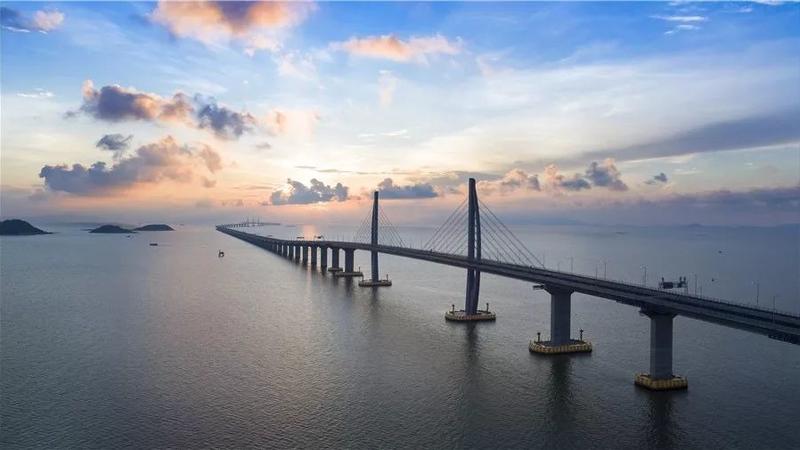 An undated photo shows the Hong Kong-Zhuhai-Macao Bridge. (PHOTO / XINHUA)
An undated photo shows the Hong Kong-Zhuhai-Macao Bridge. (PHOTO / XINHUA)
The economic vitality of waterborne transport along the Pearl River revealed an overall recovery and growth trend last year, thus playing an increasingly important role in supporting economic construction in the provinces and regions along the river, said a senior official on Wednesday in Guangzhou, capital of Guangdong province.
Freight volume on the Pearl River is projected to have hit a record of over 1.5 billion metric tons in 2023, up 7.9 percent year-on-year, said Wang Canqiang, deputy director of the Pearl River Administration of Navigational Affairs under the Ministry of Transport.
The Pearl River, the nation’s secondlargest river in terms of freight volume after the Yangtze, has played a big part in promoting economic development and cooperation among the provinces and regions along the waterway.
Wang Canqiang, deputy director of the Pearl River Administration of Navigational Affairs under the Ministry of Transpor
Port throughput along the Pearl River and its estuaries and tributaries is expected to have reached 1.95 billion tons, a year-on-year growth of 7.3 percent.
Among the total, throughput of foreign trade commodities hit 529 million tons while throughput of containers stood at 69.82 million TEUs (twenty-foot equivalent units), year-on-year increases of 6.9 percent and 2.3 percent, respectively, Wang said.
More than 45.3 million passenger trips took place along the river in 2023, approaching three times the total recorded in 2022, Wang said at a news conference on Wednesday.
"The Pearl River, the nation's second-largest river in terms of freight volume after the Yangtze, has played a big part in promoting economic development and cooperation among the provinces and regions along the waterway," Wang added.
Foshan, a major inland port along the Pearl River, is estimated to have reached cargo throughput of more than 100 million tons in 2023, indicating that it has become another inland port with annual freight volume surpassing 100 million tons.
Guigang in the Guangxi Zhuang autonomous region saw its freight volume top 100 million tons in 2020, said Wang.
Foshan Port, which played a role in connecting the Pearl River Delta city with the special administrative regions of Hong Kong and Macao, has become an important support for the city's industrial and foreign trade development.
Meanwhile, more than 27.5 billion yuan ($3.93 billion) has been invested in construction of waterway transport infrastructure facilities along the Pearl River in 2023, more than twice the investment seen in 2022, said Wang, adding that last year, the Pearl River and its tributaries had a total of 102 water transport engineering construction projects in operation, involving investment of more than 177 billion yuan.
The record high investment in the construction of waterway transport infrastructure facilities along the Pearl River has not only helped to promote the high-quality development of the waterway's transportation, but has also promoted optimization of the layout of industries along the river which links inland areas with Hong Kong and Macao, said Wang.
"And the advanced inland waterway transport system has helped transfer industries to the vast Chinese central and western regions with support for the implementation of major strategies, including construction of the Guangdong-Hong Kong-Macao Greater Bay Area," Wang said.
He said his administration will continue to speed up construction of environmentally friendly "green model channels" along the waterway to protect the ecology of the country's third-longest river system through the introduction of more new high-technology and artificial intelligence breakthroughs in the new year.
The Pearl River's major tributaries are the Xijiang, Dongjiang and Beijiang rivers, with the main waterway running through Guangdong, Yunnan and Guizhou provinces, Guangxi, as well as Hong Kong and Macao.
zhengcaixiong@chinadaily.com.cn



